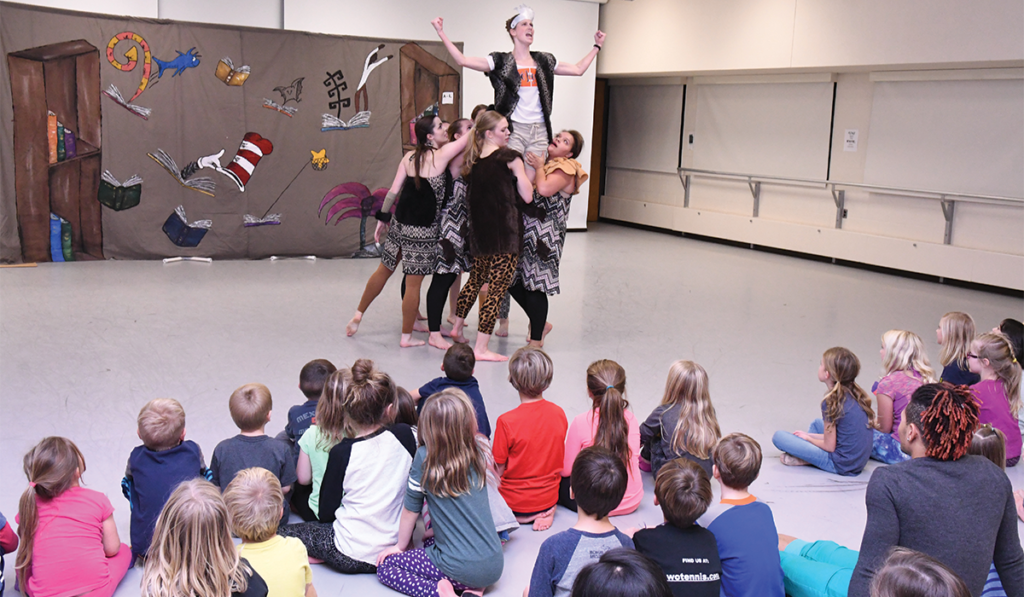Imagine a Kandinsky painting coming to life on stage, each impasto brushstroke a carefully choreographed movement. Picture a Warhol screenprint animated by dance, each plane of color made kinetic. What could young audiences learn from such dance performances?
The connection between movement and cognition drives Professor Nicki Flinn. It motivates her research, and it inspires her to serve as director of Hope’s StrikeTime Dance Theatre.
StrikeTime creates productions that educate and engage young audiences — all through the joy and process of movement. This spring, the company will offer two productions: a touring assembly consisting of a “Magical Dancing Library” that uses books by Dr. Seuss, Maurice Sendak and other authors to unlock children’s curiosity and adventure; and a concert stage performance of dances based on visual art, including works by Warhol and van Gogh.
In her efforts to answer two main questions — In what ways do students learn best? And how do students respond to interactive learning experiences combining arts and cognition? — Flinn has created an action-based learning and brain-compatible resource to complement the productions. The resource, designed for teachers to use in connection with the StrikeTime performances, emphasizes creative dance concepts and experiences.
StrikeTime performs roughly 30 shows a year at locations ranging from Hope’s Knickerbocker Theatre to schools and libraries throughout Michigan and nearby states. Flinn’s students not only contribute on stage as dancers and choreographers, but also experience the collaborative process of building a production from infancy to performance.
“We have everyone from dance education majors, to performance/choreographers, to classroom teachers, to Hope students that just love dance and theater,” says Flinn.
The educational goals of StrikeTime are far-reaching, as learning happens for the performers and the audience alike. “My goal for both the dancers [Hope students] and the viewers [children] is that they have the opportunity to create, perform, respond and connect to the material, as they participate in and observe the entire creative process,” Flinn states. “In doing so, they will experience a variety of learning outcomes, including physical, social and cognitive, which is vital as we continue to explore avenues to engage and enrich the lives of students through the arts.”
